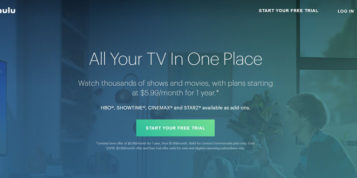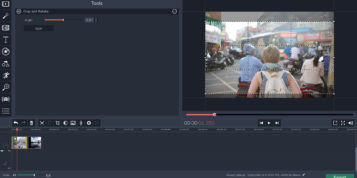Two interesting reports have surfaced in recent weeks relating to online video monetisation.
First, the New York Times (NYT) decided to stop restricting access to its online video content for non-subscribers. While these non-subscribers are still limited to 10 articles per month, videos no longer count as part of that quota.
Second, according to a number of reports, YouTube is planning to start charging a fee of between $1.99-$5.00 per month for some of its specialist video channels. Some early reports suggest that some of YouTube’s most popular content providers, including Machinima and Fullscreen, have been approached by the company to come up with ideas for new paid channels.
Looking at those two news items, it is hard to see a clear trend. Why is NYT giving away its content for free while YouTube – which is owned by Google, a company that has always championed ‘free’ content – looks poised to start charging per channel?
However, I believe that these two developments imply a clear vision for monetising online video. But before I jump to the bottom line, let’s take a look at the different monetisation models available for online video.
Free
Ads: sponsored content, pre-rolls, mid-rolls, post-rolls
Services: New York Times, Hulu, some YouTube, Crackle
Paid-for ad banners have been the most popular video monetisation strategy since YouTube introduced online video to the masses in 2005. Initially, YouTube struggled to get sponsors to buy video ads on the site (cats playing piano while making risotto never translated to CPMs) but once professionally-produced content came along, online video was able to adopt the traditional commercial TV model of free content supported by quality advertising. Now CPMs are part of the game and, with Hulu introducing a more personalised ad strategy, these ads can potentially generate significant value for both Hulu and its advertisers.
Pros: it’s free!
Cons: The viewing experience is constantly interrupted; ad personalisation is only in its early stages: some viewers note that Ad Tailor keeps showing the same ads no matter what.
Is an ad-supported model right for you as a video provider?
If you are a huge brand that has the potential to serve 400K ads per month or more, then this approach may work for you. If you are a smaller publisher, you would be better off using ad networks such as Adapt.tv or Tremor Video.
Flat fee, a la carte
Ads: none
Services: Netflix, LoveFilm, Amazon Prime, Quello
Netflix’s aggressive pricing approach has set a very high entry point for any content aggregator. Even with the recent cut the service has about 60,000 titles. Amazon is lagging behind with about 17,000 (and counting). The key here is licensing quality content – and this task has become significantly more difficult in the last three years, since the large studios and broadcasters started building their own digital hubs (BBC iPlayer, ITV Player, Hulu, Crackle, CBS.com, Vudu). However, Netflix keeps growing its user base thanks to exclusive content productions.
Pros: Premium content; exclusive content; no ads.
Cons: Relatively old titles; only available via streaming.
Is this strategy right for you as a video provider?
Probably not, unless you have a vast amount of available cash (like Apple and Microsoft) or if you are in a position to license thousands of titles that would appeal to a very specific niche that is currently underserved by other services (e.g. Quello).
Pay as you go
Ads: none
Services: iTunes, Amazon, Vimeo, chill.com, Vudu, VHX
iTunes pioneered this monetisation model and its popularity has grown in the last year. With the decrease in streaming costs, it’s quite easy to set up a paid content website based on platforms like Kaltura. Using DRM (digital rights management) technologies like Widevine, the content is rights-protected and can be securely streamed across the web. Most websites using this business model operate on a revenue-share basis and pocket 10%-30% of the transaction fee.
Pros: Premium content; supports downloading and offline viewing; new releases.
Cons: More expensive.
Is this strategy right for you as a video provider?
This is the most popular monetisation option, since there is a clear business model and a relatively low barrier to entry. The technology is easy, accessible and very robust, however with giants like iTunes, Amazon, Google Play, Vudu and even Vimeo playing in this field, competition is fierce for new entrants.
Subscription Per Channel
Ads: ?
Services: YouTube (according to various reports)
If YouTube does decide to roll out subscription channels, it could transform the way we consume online video. The idea of paying $1.99-$5/month for an ‘a la carte’ online channel may seem appealing to many if the content is well curated and professionally produced. This move could potentially persuade basic TV channels to offer more content online too, perhaps targeted at special interest groups (e.g. fans of niche sports, gardeners, classical music lovers etc.). However, cord cutting would need to become a much stronger trend for that to happen.
Pros: A highly focused ‘a la carte’ service; low price; offline viewing (maybe).
Cons: Content may be limited.
So Which Model Will Prevail?
The entire industry is still waiting for a game-changing device that will truly disrupt the way we watch online video content in our living room. Apple’s highly anticipated TV was supposed to do just that, but it has never seen the light of day. Eventually, a smart, accessible, intuitive device will come along and streamed channels will move to our living room’s big screen.
Today, a satellite TV subscription in the UK averages out at about £47 per month, while an average cable bill in the US is around $130. If even a small percentage of this revenue eventually finds its way to new online channels, it will signify a major shift.
In terms of which models will prevail, I believe that we will always have a blend of services because video content is so diverse, both in terms of length and in production value. However, once the playing field is leveled, and watching online content on your main TV is commonplace, I think that paid-for, ‘a la carte’ channels will prove to be highly appealing for both viewers and providers. Viewers who cut the cord can then begin building their own TV packages of channels based on their own interests.
I also believe that many producers will choose to keep complete control over their content and use tailored and flexible platforms such as Kaltura, as opposed to being limited by a huge platform like YouTube.
On the other hand, free content models – like the one employed by the New York Times – will always have a place. Furthermore, the advent of new Smart TVs will make it much easier to interact with the content – and even be rewarded by advertisers. Would you take a five-minute survey in order to watch a free episode of Mad Men?
To sum up, we are living in the early days of the online television revolution. As new models are introduced and new players (like the New York Times) start to become great producers, it’s clear that this revolution is real and in time will transform the industry.





